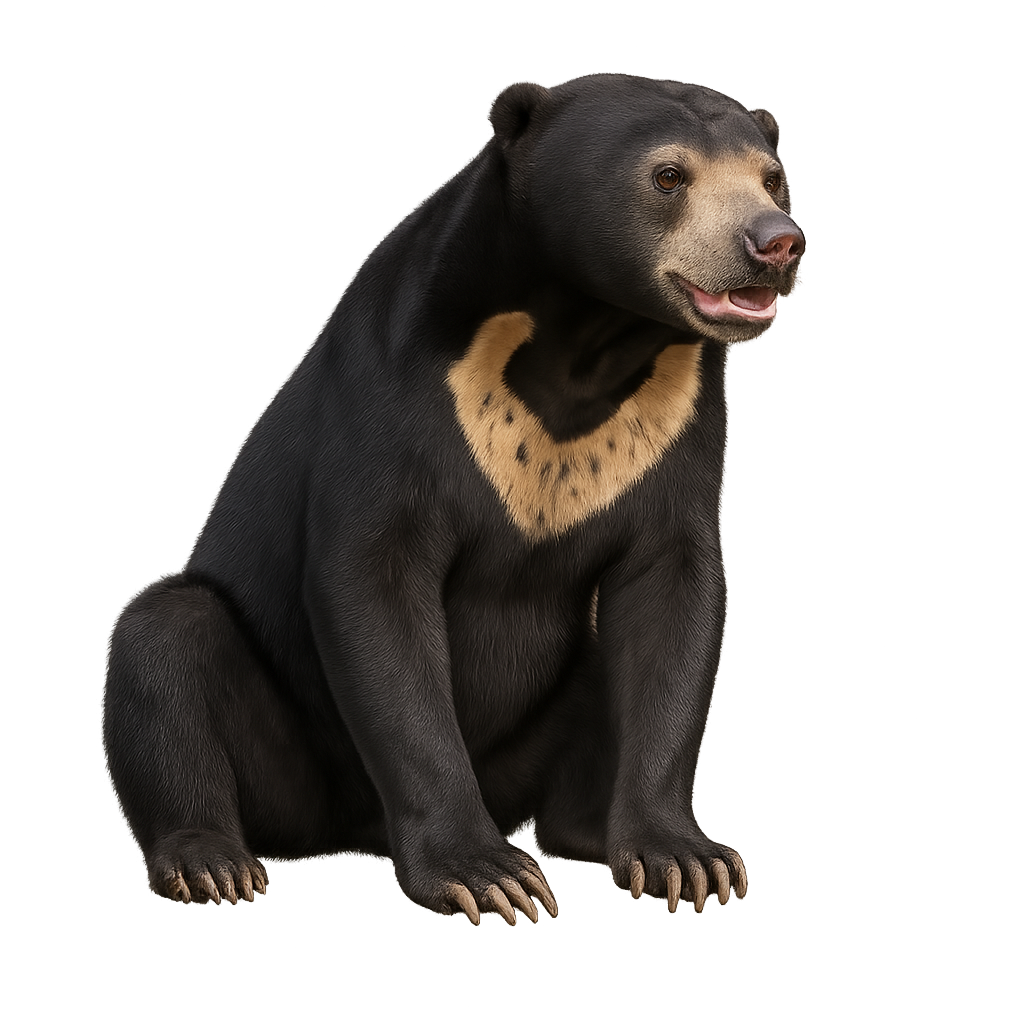Your wildlife photography guide.
Explore the malay bear in detail, study its behavior, prepare your shots.
Where to observe and photograph the malay bear in the wild
Learn where and when to spot the malay bear in the wild, how to identify the species based on distinctive features, and what natural environments it inhabits. The WildlifePhotographer app offers tailored photography tips that reflect the malay bear’s behavior, helping you capture better wildlife images. Explore the full species profile for key information including description, habitat, active periods, and approach techniques.
Malay bear
Scientific name: Helarctos malayanus

IUCN Status: Vulnerable
Family: URSIDAE
Group: Mammals
Sensitivity to human approach: Suspicious
Minimum approach distance: 10 m
Rut period: December to January
Gestation: 95-100 jours
Births: March to April
Habitat:
Tropical rainforests
Activity period :
Mainly active at night, generally discreet during the day.
Identification and description:
The Malayan bear is the smallest of the bears, characterized by its small size, black fur, and a light-colored fur collar around its neck. It primarily lives in the tropical forests of Southeast Asia, where it feeds on fruits, honey, and insects. This animal is rather discreet, nocturnal, and semi-arboreal, often seen in trees looking for food. Although protected, the Malayan bear faces serious threats such as deforestation and illegal hunting.
Recommended lens:
400 mm – adjust based on distance, desired framing (portrait or habitat), and approach conditions.
Photography tips:
Photograph the Malayan bear using a telephoto lens, taking care to maintain a respectful distance as it is a rather discreet animal. It is best to photograph early in the morning or late in the afternoon when the light is soft and the bear is more active. Be discreet and wait for a moment when the animal is in the trees or areas where it is foraging for food.
The WildlifePhotographer App is coming soon!
Be the first to explore the best nature spots, track rutting seasons, log your observations, and observe more wildlife.
Already 1 432 wildlife lovers subscribed worldwide

